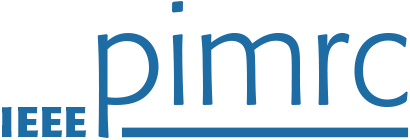Instructors
Dr. Geoffrey Ye Li, Geoffrey.li@imperial.ac.uk
Imperial College London, UK
Dr. Geoffrey Ye Li is currently a Chair Professor in wireless systems with Imperial College London. Before joining Imperial in 2020, he was with Georgia Institute of Technology for 20 years and AT&T (Bell) Labs – Research for about five years. His general research interests include statistical signal processing and machine learning for wireless communications. In the related areas, he has published over 500 journal and conference papers in addition to over 40 granted patents. His publications have been cited by over 40,000 times and he has been recognized as the World’s Most Influential Scientific Mind, also known as a Highly Cited Researcher, by Thomson Reuters almost every year.
Dr. Li was awarded IEEE Fellow for his contributions to signal processing for wireless communications in 2005. He won several prestigious awards from IEEE Signal Processing Society (Donald G. Fink Overview Paper Award in 2017), IEEE Vehicular Technology Society (James Evans Avant Garde Award in 2013 and Jack Neubauer Memorial Award in 2014), and IEEE Communications Society (Stephen O. Rice Prize Paper Award in 2013, Award for Advances in Communication in 2017, and Edwin Howard Armstrong Achievement Award in 2019). He also received 2015 Distinguished ECE Faculty Achievement Award from Georgia Tech.
Dr. Li has organized and chaired many international conferences and has been involved in editorial activities of many journals, including the founding Editor-in-Chief of IEEE JSAC ML Series.
Dr. Li once provided 4 different tutorials at IEEE ICC, Globecom, and VTC for 27 times in total.
Dr. Zhijin Qin, z.qin@qmul.ac.uk
Queen Mary University of London, UK
Dr. Zhijin Qin (z.qin@qmul.ac.uk) is a lecturer (assistant professor) at Queen Mary University of London. She was with Lancaster University and Imperial College London as a lecturer and research associate, respectively, from 2016 to 2018. Her research interests include semantic communications, end-to-end communications, resource allocation in LoRa. She serves as an area editor of IEEE JSAC Series on Machine learning in Communications and Networks, an associate editor of IEEE Transactions on Communications, IEEE Transactions on Cognitive Communications and Networking, and IEEE Communications Letters. She served as the symposium co-chair for IEEE VTC Fall 2019, Globecom 2020/2021. She received the Best Paper Award from IEEE Globecom 2017, and the IEEE Signal Processing Society Young Author Best Paper Award 2018. Dr Qin has presented the tutorial at IEEE Globecom 2020.
Motivation
It has been demonstrated recently that deep learning (DL) has great potentials to break the bottleneck of the conventional communication systems. In the tutorial, we will provide a comprehensive overview on DL for wireless communications, including physical layer processing, resource allocation and semantic communications.
DL can improve the performance of each individual (traditional) block in the conventional communication systems or jointly optimize the whole transmitter or receiver. Therefore, we can categorize DL enabled physical layer communications into with and without block processing structures. For DL based communication systems with block structures, we introduce joint channel estimation and signal detection based on a fully connected deep neural network, model-drive DL, and some experimental results. For those without block structures, we provide recent endeavors in developing end-to-end learning communication systems.
The traditional wisdom is to explicitly formulate resource allocation as anoptimization problem. However, as wireless networks become increasingly diverse and complex, such as high-mobility vehicular networks, the current design methodologies face significant. Meanwhile, DL represents a promising alternative due to its remarkable power to leverage data for problem solving. We will first introduce how to use DL to solve optimization problems for resource allocation, and then discuss deep reinforcement learning for resource allocation in vehicular networks.
In the past decades, communications primarily focus on how to accurately and effectively transmit symbols. The achieved transmission rate has been improved tens of thousands of times than before and the system capacity is gradually approaching to the Shannon limit. Semantic communications have been regarded as a promising direction, which aims to exchange semantic information rather than receiving the transmitted bit sequences or symbols accurately. We will first introduce the concept of the semantic communication and highlight its key difference from typical communications. Then we will present the initial work on semantic communications.
Structure and content
An Outline of the Tutorial Content, including Its Tentative Schedule
- Introduction: Why Deep Learning? (5 minutes)
- DL for Physical Layer Communications (60 minutes)
- General Introduction
- Model-Driven DL for Physical Layer Communications
- DL for End-to-End Wireless Systems
- Remarks and Questions-and-Answers
- DL for Wireless Resource Allocation (60 minutes)
- Introduction
- Deep Learning assisted Optimization
- Deep Reinforcement Learning based Approached
- Remarks and Questions-and-Answers
- Semantic Communications (45 minutes)
- Introduction
- Semantic Communications Principles and Metrics
- Deep Learning enabled Semantic Communications
- Remarks and Questions-and-Answers
- Conclusions (10 minutes)


